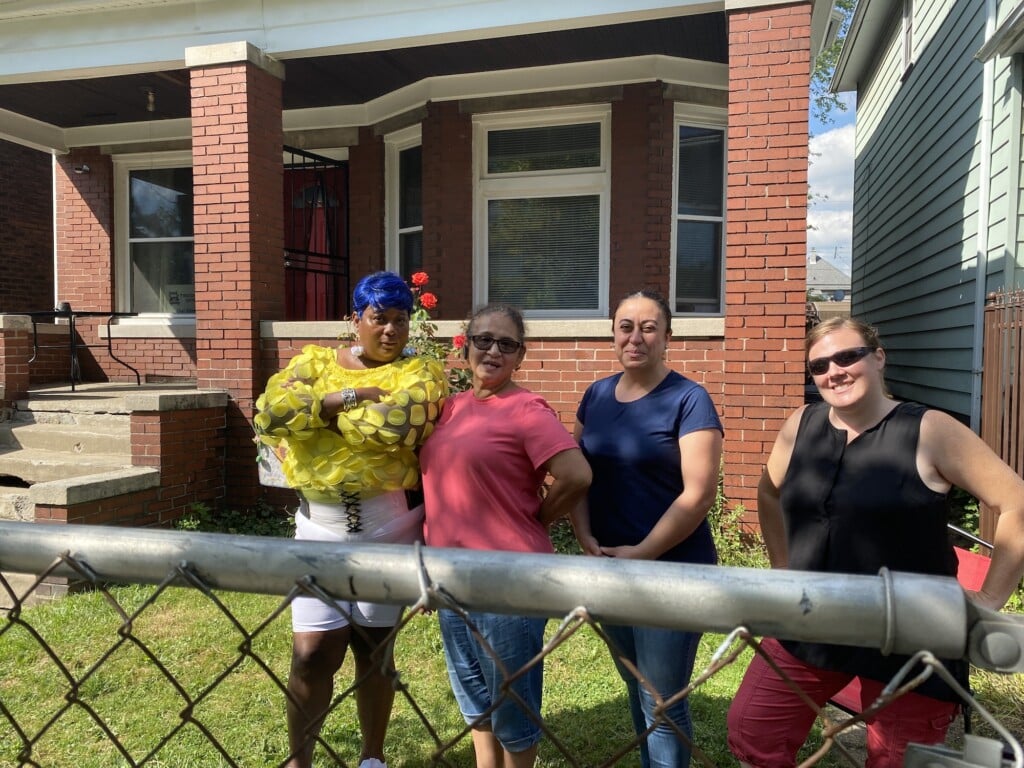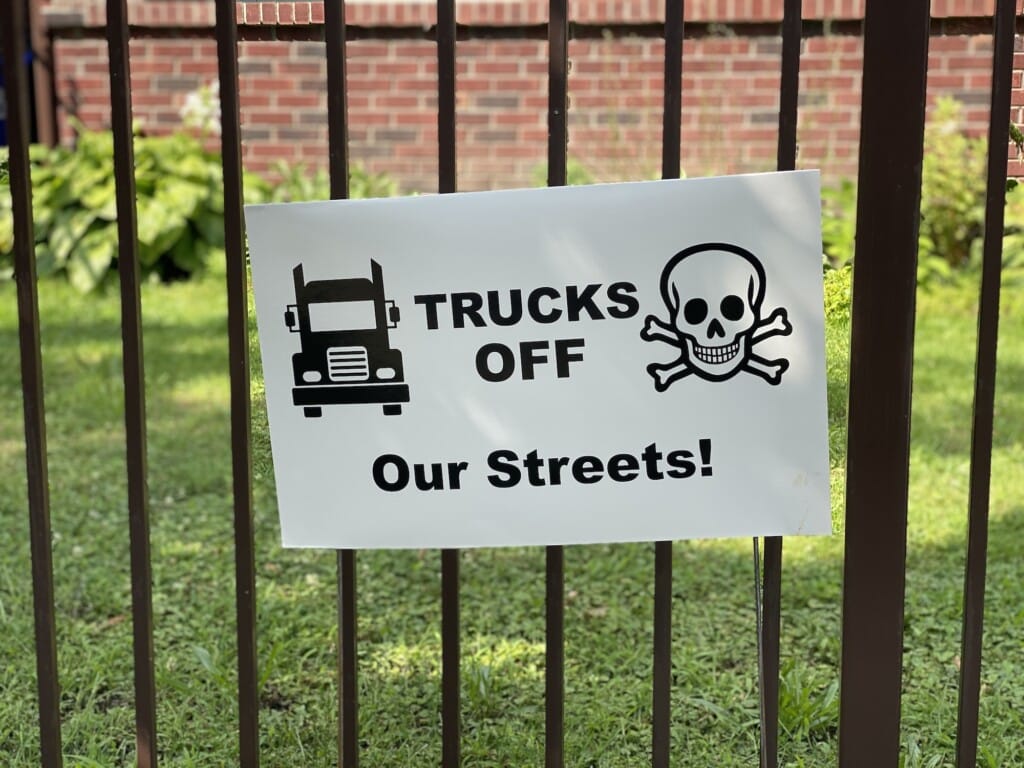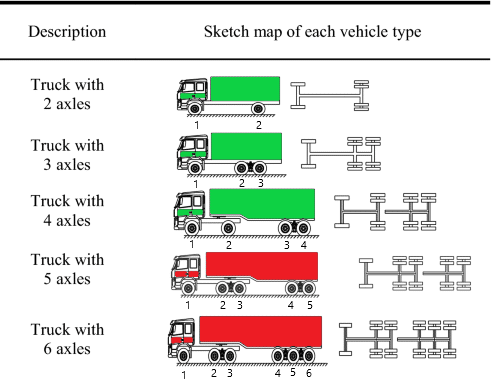Cynthia Mendez is tired of living with the noise, the vibrations and the soot from constant truck traffic coming past her home on Livernois in Southwest Detroit. The rumbling wakes her up at night, the vibrations have caused damage to the foundation of her home, and the soot cakes up on her vehicle and the outside of her house.
Mendez and neighbors Thomasenia Weston, Amanda Holiday, and Eugenia Sanchez told their stories to a bus tour organized by the Southwest Community Benefits Coalition for city and state officials Wednesday. Representatives from the Michigan Department of Transportation and leaders from across city government took the day to tour the neighborhood, where they got to experience the impact of truck traffic on the neighborhood’s residents first-hand.

While attempting to share their experiences living with constant truck traffic, the women were interrupted every few minutes by the roar of semi-trucks passing just feet from Weston’s front yard. After one of the trucks passed, Weston exclaimed, “You hear that? Quiet. That’s how its supposed to sound.”
Noise pollution is a known stressor that can cause high blood pressure, hearing loss, and sleep deprivation. A 2021 University of Michigan study in Southwest Detroit found that residents were exposed to noise levels as high as 70 decibels (dB) from truck traffic. The United States Environmental Protection Agency set a 55 dB level to protect public health and welfare in residential areas. And diesel exhaust contains particulate matter that can cause headache, dizziness, and irritation of eyes, nose and throat, and exacerbate asthma.
The neighbors had hoped that by now the city would have finally adopted a truck route ordinance forbidding trucks to cut through these residential neighborhoods. Former District 6 council member Racquel Casteñeda-López was working on such legislation, building on years of community activism and a 2021 Giffels-Websters Engineering study. Among other items, the study recommends routing southbound trucks coming down Livernois to Vernor, avoiding the residential neighborhood south of Vernor.
But the legislation was still under review by the city’s Law Department when Casteñeda-López left office in January. Corporation Counsel Conrad Mallett told Planet Detroit in a statement that the Law Department has not yet prepared a final ordinance and that “the Department of Public Works was engaged near the end of the prior City Council term and identified that any truck route ordinance would need to be citywide to be appropriate.”
Andrew Bashi, an attorney with the Great Lakes Environmental Law Center who has been working with Weston, told Planet Detroit that the city has come up with multiple reasons to delay action over the past seven years.

“It’s not fair for people to keep waiting when this is something that impacts them every single day – impacts their health and affects the safety of everyone in their household and their community,” he said.
Southwest resident Deb Sumner told Planet Detroit that she and her neighbors have been asking state and city governments to address the issue for more than 40 years. “Don’t think we as the community haven’t been asking the city for many decades for designated truck routes and better air quality,” Sumner said. “There’s a healthier way to support business and protect your people. It should be common sense.”
Although incoming District 6 council member Gabriela Santiago-Romero has indicated that the ordinance is a legislative priority, it still has not been introduced.
In an email, policy analyst Ray Duncan told Planet Detroit that Santiago-Romero is “actively working with community partners and the administration and will be convening a working group to push the truck routes legislation forward.”
But that could take as long as until next spring, according to a July email from Duncan obtained by Planet Detroit, because “the ordinance would not only impact the southwest area but the city as a whole and needs further input from additional departments including community partners.”
Sanchez, Weston, and Holiday are tired of waiting. They want to see action now. At a bare minimum, Holiday said, she’d like to see enforcement of the existing traffic laws, which prohibit trucks of a certain size from traveling the residential street from 7 p.m. to 7 a.m.

“I think that’s the first thing – can we at least have them not be woken up at two in the morning by a rumbling truck? And I think if we scare [truck operators] with a ‘you’re gonna get a ticket if you don’t listen to this’ and just consistently do it for a week or two, and it’ll drive them away.
Bashi’s experience bears this out. He submitted a complaint via the city’s Improve Detroit system last July on behalf of Weston, prompting city law enforcement to issue violations to truck drivers. He recalls Weston calling him in tears because her street was, for a short time, quiet.
The reprieve was short-lived. Once enforcement stopped, the trucks came back.

